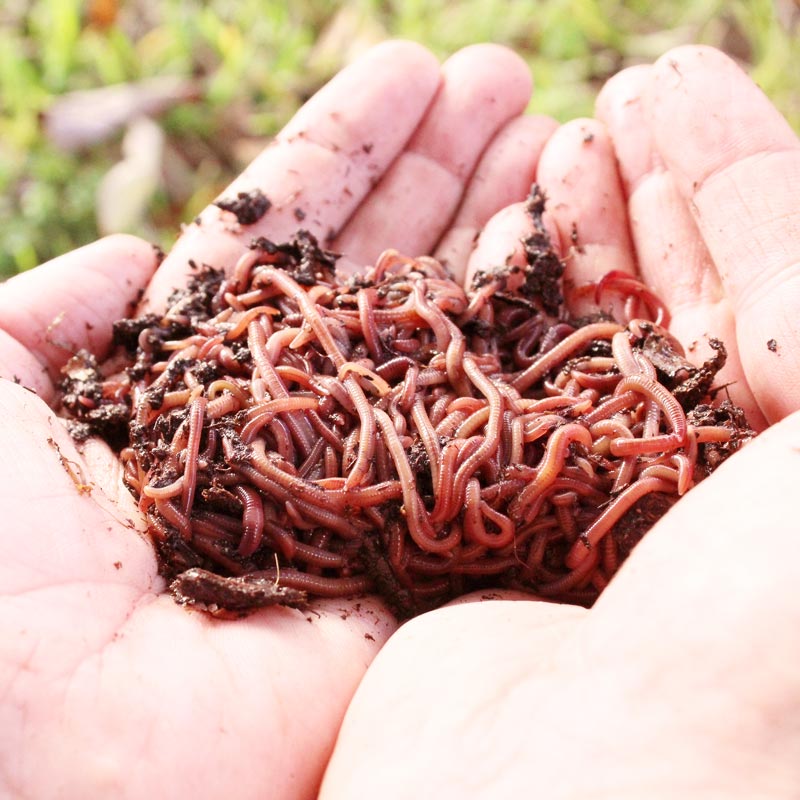Red Wiggler Worms Demystified: Opening the Tricks of Vermiculture for Greener Living and Nutrient-Rich Soil
In the realm of sustainable techniques for enriching soil high quality and advertising eco-conscious living, red wiggler worms play a crucial yet often neglected function. These modest creatures have the exceptional capacity to transform natural waste into nutrient-rich spreadings that work as a powerful natural fertilizer. By delving into the world of vermiculture, one can uncover a myriad of advantages that prolong much past typical composting approaches. Recognizing the intricacies of looking after these worms, enhancing their environment, and using their castings can lead to a greener lifestyle and much healthier dirt for plants to grow.
The Duty of Red Wiggler Worms
Red Wiggler worms play a crucial role in composting systems by efficiently breaking down organic matter right into nutrient-rich spreadings. These starved eaters eat a variety of organic products, such as cooking area scraps, yard waste, and paper products. As they feed, the worms' digestive processes break down the raw material right into a fine, dark, and nutrient-dense material called worm spreadings or vermicompost.
The spreadings produced by Red Wiggler worms are extremely beneficial for soil health and wellness and plant development. They are rich in necessary nutrients like potassium, phosphorus, and nitrogen, which are vital for supporting healthy plant development. Furthermore, worm castings include helpful germs and enzymes that help improve soil structure, rise water retention, and enhance nutrient uptake by plants.
Benefits of Vermicomposting

In addition, vermicompost, the nutrient-rich final result of vermicomposting, works as an outstanding organic fertilizer and dirt conditioner. It boosts dirt structure, boosts dirt oygenation, and raises dirt dampness retention. These homes add to healthier plants with stronger root systems and far better resistance to diseases and pests. Vermicompost additionally enhances the dirt with crucial nutrients like potassium, phosphorus, and nitrogen, advertising plant growth and total soil fertility.
In addition, vermicomposting supports sustainable horticulture techniques by offering a natural and chemical-free choice to artificial plant foods. Red Wiggler Worms. This environmentally friendly method not only improves the dirt yet also helps minimize dependence on harmful chemicals, promoting a greener and much more sustainable method of gardening
Setting Up a Worm Bin
When developing a worm container for vermicomposting, proper configuration is vital to ensure the success of the composting process. The very first action in setting up a worm container is selecting an ideal container.
After including the bedding, introduce the red wiggler worms to the bin. It is view publisher site advised to begin with a handful of worms and gradually raise as they multiply. The worms ought to after that be given with food scraps such as vegetables and fruit peels, coffee premises, and eggshells. It is vital to avoid including meat, dairy, oily, or salted foods to protect against drawing in parasites and producing unpleasant odors.
On a go to the website regular basis keep track of the wetness levels and temperature level in the worm bin to make sure optimum problems for the worms. With correct configuration and upkeep, the worm container will effectively transform natural waste right into nutrient-rich compost for your plants and yard.
Harvesting Worm Spreadings
To effectively accumulate nutrient-rich worm castings from your vermicomposting system, a methodical harvesting approach is necessary. When it comes time to harvest the worm spreadings, there are a couple of vital steps to comply with to make sure an effective procedure. First of all, stop including fresh food scraps away of the worm bin for a couple of weeks before harvesting. This urges the worms to move sideways with fresh bed linens and food, making it less complicated to scoop out the spreadings from the other side.

Troubleshooting Common Issues
Recognizing and addressing common difficulties that may emerge during the vermicomposting procedure is vital for maintaining a healthy and efficient worm container. Including excess food scraps can lead to an accumulation of dampness and acidity in the worm container, possibly harming the worms. One more issue is unpleasant smells emanating from the worm container.
Additionally, if the worm population is decreasing or the worms show up harmful, maybe as a result of ecological stressors such as severe temperature levels or pH degrees. Keeping track of these factors and making required adjustments is vital for the health of the worms. By troubleshooting these common concerns without delay, vermicomposters can ensure a successful and smooth vermicomposting procedure while maintaining a prospering worm populace.

Final Thought
In conclusion, red wiggler worms play a vital function in vermiculture by damaging down organic matter into nutrient-rich soil. Setting up a worm bin is important for successful vermiculture, and collecting worm spreadings provides useful compost for gardening.
As they feed, the worms' digestion procedures damage down the natural issue into a penalty, dark, and nutrient-dense product known as worm spreadings or vermicompost.
The castings produced by Red Wiggler worms are highly beneficial for soil wellness and plant development. Adding excess food scraps can lead to a build-up of wetness and acidity in the worm bin, potentially damaging the worms.Furthermore, if the worm population is decreasing or the worms appear undesirable, it could be due to ecological stressors such as severe temperature levels or pH levels. Establishing up a worm bin is vital for effective vermiculture, and gathering worm castings supplies useful compost for horticulture.
Comments on “Red Wiggler Worms - All-natural Option for Environment-friendly Composting”